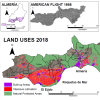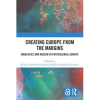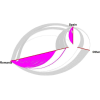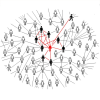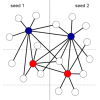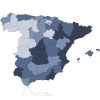ORBITS
The role of transnational social fields in the emergence, maintenance, and decay of demographic enclaves
Description
Romanian enclaves in Spain have received little academic attention so far, but are nevertheless of singular importance locally. In this study, conducted by Egolab-GRAFO and with the participation of Miranda Lubbers (then also an Egolab member) and investigators from the GraphNets group at the University of Bucharest, we investigated two Romanian enclaves located in Castellón de la Plana and in Roquetas de Mar. We wished to contribute to the knowledge base about ethnic enclaves by addressing two gaps in the literature. First, the functioning of ethnic enclaves has hardly been studied in tandem with the migration dynamics of the involved actors. Nevertheless, our prior research showed that the phenomenon of the emergence of ethnic enclaves should be conceptualized taking into account the transnational social fields that fuel it and not only the internal dynamics in the enclave and the country of residence. Therefore, we proposed to study enclaves from a transnational perspective, which allowed us to see how individuals in the two places coordinate their mobility patterns and care arrangements in order to benefit from the ethnic enclave. Second, prior research that measured transnational social fields quantitatively tended to focus exclusively on individuals as actors, ignoring organizational entities that may nevertheless greatly affect both migration patterns of individuals and the functioning of the enclave in labour market terms. To fill this gap, we combined an individual and an institutional perspective in a two-level social network model. This design gave us a more complete understanding of ethnic enclaves. Our objective, then, was to investigate how circular migration patterns are intertwined with the emergence, maintenance, and possible decay of enclaves, and how different individual positions in the transnational field are related to differences in outcomes such as labour market positions and the construction of the sense of community and identification.
Specifically, our research questions were the following:
-
How can we conceptualize and measure the dimensions of transnational social fields?
-
How can we identify the possible existence of specialized roles in these structures and what are their functions?
-
What is the role that organizational entities play in transnational social structures?
-
What is the relation between these transnational structures and the emergence, maintenance, and possible decay of enclaves?
-
What effects do individual positions in these structures have on the insertion in the labour market, sense of belonging with Spain, Romania, and Europe, and in general, on the social integration of Romanian immigrants?
We performed intensive, multi-sited fieldwork in the enclaves in Spain and the community of origin in Rumania (in the region of Dâmbovita), combining qualitative and quantitative data collection methods - the latter based on social network analysis. We used recently developed, innovative methods of data collection and data analysis to reach our goals.
The principal investigators were Miranda Lubbers and José Luis Molina (egolab-GRAFO).
Publications
-
MIGRANT ENTREPRENEURS IN THE "FARM OF EUROPE": THE ROLE OF TRANSNATIONAL STRUCTURES (2023). Globalizations (Online first). DOI
-
MAKING EUROPE FROM BELOW: INTRA-EU MIGRATION AND MOBILITIES CONNECTING THE MARGINS (2023). In: Kristín Loftsdóttir, Brigitte Hipfl, and Sandra Ponzanesi, Creating Europe from the Margins: Mobilities and Racism in Postcolonial Europe (pp. 157-173). Routledge, London. DOI
-
LABOUR MOBILITY AND INFORMALITY: ROMANIAN MIGRANTS IN SPAIN AND ETHNIC ENTREPRENEURS IN CROATIA (2022). Politics and Governance, 10 (2): 279-292. DOI
-
-
(IM)MOBILITIES AND INFORMALITY AS LIVELIHOOD STRATEGIES IN TRANSNATIONAL SOCIAL FIELDS (2022). In: Polese, A., Informality, Labour Mobility and Precariousness: Supplementing the State for the Invisible and the Vulnerable. Palgrave MacMillan (pp. 33-68). Publisher's website
-
MEASURING TRANSNATIONAL SOCIAL FIELDS THROUGH BINATIONAL LINK-TRACING (2021). PLoS One, 16 (6): e0253042. DOI / Open-access PDF
-
STRUCTURAL EMBEDDEDNESS IN TRANSNATIONAL SOCIAL FIELDS: PERSONAL NETWORKS, INTERNATIONAL (IM)MOBILITIES, AND THE MIGRATORY CAPITAL PARADOX. (2021). Social Inclusion, 9 (4): 278-290. DOI / Open-access PDF
-
PERSONAL NETWORKS AND MIGRATION TRAJECTORIES (2021). In: Small, M. J., Perry, B., Pescosolido, B., & Smith, N. (Eds.), Personal Networks: Classic Readings and New Directions in Egocentric Analysis. Cambridge University Press, Cambridge. Publisher's website
-
ETNOGRAFÍAS MULTISITUADAS EN LOS CAMPOS TRANSNACIONALES: EL CASO DE RUMANÍA-ESPAÑA (2021). In: Marcu, S., Transformaciones y Retos de la Movilidad de los Europeos del Este en España: Treinta Años Después de la Caída del Muro de Berlín, 1989-2019. Tirant lo Blanch, Valencia. Publisher's website
-
SOCIAL NETWORKS AND TRANSNATIONAL SOCIAL FIELDS: A REVIEW OF QUANTITATIVE AND MIXED-METHODS APPROACHES (2020). International Migration Review, 54 (1): 177-204. DOI
